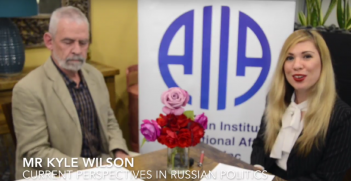What Are Russia's Interests in Nepal?

Russian corporations are expected to increase their presence in the region. The Kremlin might attempt to increase its influence in Kathmandu, especially due to Nepal’s hydro energy potential.
As the world’s natural resources become increasingly scarce, major global powers are actively working on redistribution of South Asia’s crude oil, natural gas and other energy. Nepal is one of the richest countries in the world terms of water resources, and in the foreseeable future, Russia might get involved in the country’s energy sector.
According to Russian President Putin, Moscow and Kathmandu have good prospects of cooperation in the energy, metallurgy, infrastructure, and civil aviation sectors. Russia already supplies helicopters to Nepal, and the Kremlin plans to export some of its aircraft to the South Asian country.
“The Russian aviation equipment has proved itself to be good in the high-mountain conditions of Nepal. Mi-17 helicopters supplied earlier are operating in Nepal and plans are in place to develop the interactions in this sphere for the future,” said Russian Foreign Minister Sergey Lavrov after recent talks with his Nepalese counterpart, Pradeep Kumar Gyawali.
Apart from military, Russia is interested in Nepal’s energy potential. According to Nepalese officials, Russian expertise in the energy sector (a sector in which the Russian Federation has a long and leading experience) could be of tremendous importance for Nepal. Russian technology related to hydro-power plants, accessories, and non-conventional use of energy is considered to be particularly suitable for Nepal. It is worth mentioning that the Soviet Union provided assistance to Nepal for the setting up of Panauti Hydro-electric power station in 1965.
The Soviet Union started extending economic and development cooperation to Nepal’s development efforts soon after the establishment of diplomatic relations in 1956. In particular, a large number of technical human resources were trained in the Soviet Union mainly in the engineering and industrial fields. However, unlike the USSR which had a strong ideology, modern Russia – especially when it comes to international relations – has merely financial interests that are often related to the oligarchs that run Russia’s economy. At this point, Russian businesses are not showing particular interests in Nepal. The two countries have been maintaining trade and economic relations since the 1960s, though they have not necessarily been lucrative. When the Soviet Union assisted in the construction of a number of industrial and infrastructure facilities in Nepal, trade between Moscow and Kathmandu stood at only US $9.1 million in 2018.
In spite of such low profits in trade, business ties between the two countries will likely grow in the future. In the first six months of 2019, a 5.5 percent increase was recorded compared to the same period in 2018. Nepal is reportedly working on a number of projects including nine major power plants while considering another 27 sites for future exploration. It is expected that Russian energy corporations will try to get involved and benefit from cooperation with Nepal, as the country’s river systems provide immense potential for hydroelectric development. Nepal’s maximum potential for the production of hydroelectricity has not yet been met.
Some authors consider Nepal to be “the biggest natural battery system of the world” where renewable energies like solar and wind in the entire region can be used to pump water back to higher elevation dams. It is believed that, due to its hydro potential, Nepal can generate the cheapest electricity in the world. Since the global powers are trying to get full control over energy resources, especially in small countries, it is a matter of time before countries like Russia, China, the United States, or even India, show huge interests in Nepal’s hydro potential.
Apart from water, Nepal also has mineral resources. However, they are scattered, and barely developed. There are also known deposits of lignite, iron ore, magnesite, copper, and cobalt, but due to the lack of modern technology and equally skilled labour, the country has been unable to obtain these minerals at desired levels. After the dissolution of Soviet Union, the number of Nepalese going to Russia for higher education has significantly declined. In spite of that, a formidable number of younger Nepalese are still studying at Russian universities. It remains to be seen if they will be able to use their knowledge in order to start exploiting Nepal’s natural resources.
Russia is not the only country that is interested in Nepal’s energy. India, which is seen as Russia’s ally, launched construction of a 900 MW power plant in Nepal in November 2018. The project is expected to cost US $1.04 billion and is being built by state-run Indian firm, Satluj Jal Vidyut Nigam. It is worth mentioning that the project is moving forwards just as a Chinese proposal to build a 750 MW power plant in west Nepal has run into a roadblock. China is, reportedly, pouring aid and investment into Nepali hospitals, roads and hydroelectric plants. Since Russia is not yet involved in energy projects in Nepal, it will face strong competition in the South Asian country.
Even though Nepal is seen by some authors as a country that is in India’s geopolitical orbit, the Kremlin might use the Kalapani dispute between New Delhi and Kathmandu to attempt to get more influence in Nepal. Moscow is already using India as a counterbalance to China, which is Russia’s geopolitical rival rather than natural partner. New Delhi, on the other hand, is trying to benefit from its military cooperation with the Kremlin, although some political circles in Russia fear that India might have hidden agendas, especially when it comes to the Russian Far East.
Apart from the strategic partnership with India, Russia also has a comprehensive partnership and strategic collaboration with China, which is India’s major rival. Such Russian “double game” policy is not new. For example, for many years, Kremlin officials have been claiming they have a strategic partnership with both Armenia and Azerbaijan, although the two countries have very tense relations due to the ongoing conflict in Nagorno-Karabakh, also known as Artsakh. Even though Armenia is part of the Russia-dominated Collective Security Treaty Organisation, which should make Yerevan Moscow’s ally, on the ground Russia is supplying weapons to both Armenia and its major opponent – Azerbaijan.
Naturally, the Kremlin, just like Washington, or any other major power, is primarily taking care of its own political and geoeconomic interests. When it comes to Nepal, Russia is far behind India and China, but in the long term, its expected economic presence in the country might affect Beijing’s and New Delhi’s businesses in the region.
Nikola Mikovic is a freelance journalist based in Serbia. He covers mostly Russian, Ukrainian, and Belarusian foreign policies, and is writing for multiple web-magazines.
This article is published under a Creative Commons Licence and may be republished with attribution.





